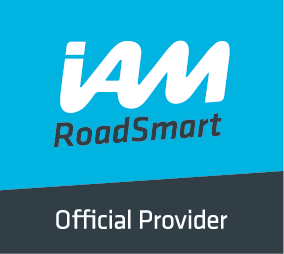Spoken Thoughts
Our eyes take in visual information from our environment and our brain interprets that information. This process is affected by our past experience – we see what we expect to see – and is especially affected when we are tired, bored or distracted for instance using a phone or holding a conversation with a passenger or even just thinking about something else other than driving. It is very rare that something on the road happens ‘suddenly’. Driving situations are readable and predictable. The links and clues are there for the driver who is paying attention and has improved their observational skills to see. The purpose of spoken thoughts is to train the driver to take in and process much more information than usual, and to anticipate danger. Once you start you will realise the enormous number of things that our brains process automatically every time we drive. By learning to process these distractions and potential dangers in a more efficient way you will be able to drive more safely. Spoken Thoughts will also teach you to ignore things that aren’t of importance so that you can remain focused on the things that are important.
By practicing spoken thoughts and adding in lateral vision and the mirror a driver will have the 360°awareness that allows them to predict what’s likely to happen next.
Here are links to two of the many examples of spoken thoughts in action on You Tube
It is important to realise that visual scanning at this level doesn’t come naturally to most of us. We tend not to look ahead and end up reacting to events rather than anticipating them. That’s why some drivers think things happen ‘suddenly’. Spoken thoughts helps to sharpens driver’s observation skills so that they become a natural part of your driving.
Remember, in Spoken Thoughts, the driver should try to describe everything that he or she sees and is doing and why they’re related to the situation, describing the hazard and how they intend to minimise the risk from the hazard.
The comments must be articulated before the driver performs the manoeuvre because this indicates that the driver has seen the danger and is responding to it.
The only way to become better at spoken thought drives is to practise. When you first start, it will seem like you are inundated with things to describe, but over time you will become fluent.
It is better to practice using concise statements as there are often many events happening at the same time. For example, instead of ‘checking my mirrors now’, just say ‘mirror’ or ‘left mirror’.
For instance, on a busy road, or in a built up area, you may initially find there is so much going on that you can’t describe it all quickly enough and so become tongue-tied. You should practice speaking and driving when on your own, with no one to laugh at or criticise the jumble of words that may spill out. At first, speaking whilst driving may cause you to slow down or in extreme cases, to speed up and you should prepare to make any necessary adjustments to maintain safety. In all circumstances, drivers must remember that safety is their number one priority For example, coming out of a bend, having correctly assessed the limit point on approach to the bend, they see a tractor emerging, it is less important to vocalise ‘there is a tractor moving slowly out of the farm entrance blocking my path, so rear view mirror check, then gentle to firm brakes to avoid it’ than it is to actually stop. Once comfortable with speaking whilst driving, advanced drivers will find their delivery becomes more ordered. In the same scenario, they may say ‘mirror and brakes for the tractor, keeping brake lights on for the safety of following traffic’
A successful spoken thoughts drive will show that the driver is prioritising information to stay safe in all circumstances. Dividing the commentary into a small number of categories helps to focus thoughts.
Areas that must be included:
- Anything likely to affect safety – a hazard is anything that contains an element of actual or potential danger. These should always be mentioned, so that drivers can plan their response in advance. Include aspects like traffic lights, roundabouts, T-junctions, blind corners or crests, parked cars reducing visibility, schools
- Actions of other vehicles that could cause a danger (vehicles changing lanes, large vehicles that might lead to less room, brake lights ahead vehicles entering the roadway or waiting at junctions.)
Areas that should be included:
- Use of mirrors and indicators
- Changes in the road condition (narrowing, change of surface)
- Changes to your road speed or position to give you a buffer
- Indicated change in road direction where you can’t see the road (e.g. using tree line, lampposts, etc)
- Changes of gear and the reason why
- Use of road markings and other clues (e.g. checking centre line and markings on the road, e.g. SLOW)
- Pedestrians and other vulnerable road users (e.g. pedestrians waiting at a crossing, cyclists, horse riders, etc)
- and similar aspects which complete the picture.
Areas we would like to include:
- Observation links such as the bins are out for the collection lorry, a church steeple indicating a possible change in speed limit and so on. These are interpretations of the actual observations which anticipate possible future events.
Remember that priority matters, for while it is excellent to say “entering a built-up area expecting to see an increase in vehicular and pedestrian activity; I will mention junctions and driveways should they affect my drive”, it is completely undermined if the driver fails to mention the school crossing patrol person stepping out into the road as they start their speech!
To improve your spoken thoughts, think of using your eyes as if they are on main beam rather than dipped this gives you a high visual horizon, with more information and more time to assess hazards. It will also help to improve your commentary if you talk back towards the car from the furthest point of vision, regularly lifting vision to continually prioritise the information ahead. Remember that in national speed limit areas, that while hazards are often fewer, they can arise quickly, due to the speed of travel. All the time be prepared to interrupt the flow of the commentary and prioritise IPSGA to keep the car safe.
During spoken thoughts the driver should be informing the passenger (real or imagined) what allows them to drive this car, along this piece of road, in this position, at this speed. A very good driver will include information about how they are going to achieve this. And a great driver will tie all the information together and sound seamless with good intonation, reflecting the circumstances of the drive
The purpose of spoken thoughts is to sharpen your brain’s processing skills when it comes to observing what’s going on around you on the road while you are driving or riding, and what potential dangers are coming up.
If you’ve been driving a while learning to do a spoken thoughts drive will improve your skills and reduce your likelihood of having an accident.

